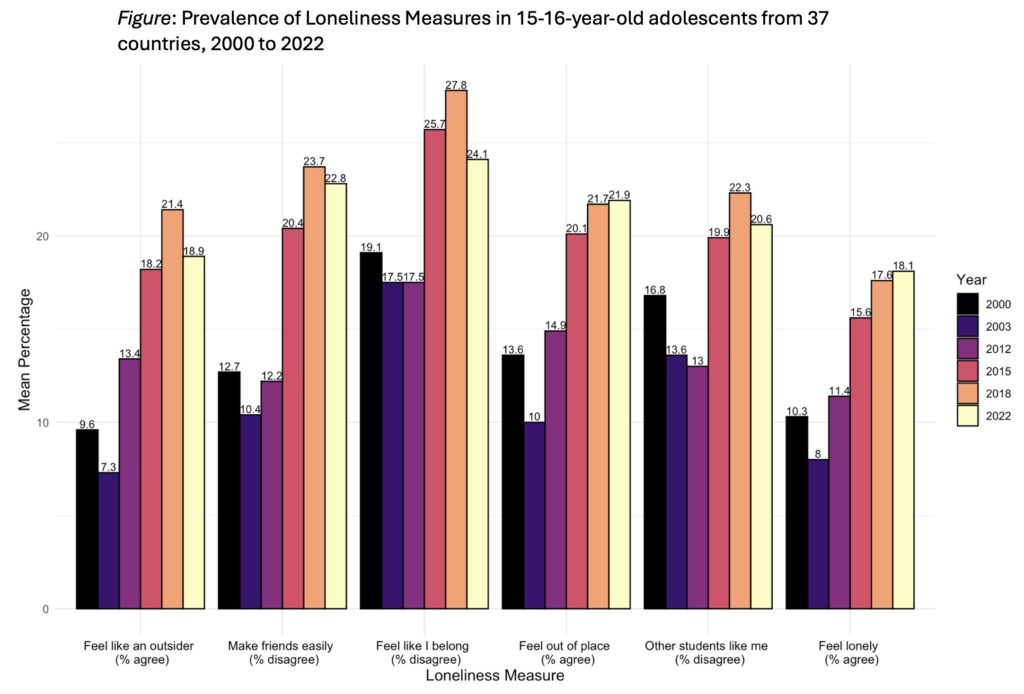LATEBREAKER
Mental Health
Global Trends in Adolescent Loneliness, 2000-2022 Sophia L. Freije* Sophia Freije Isaac C. Rhew Yolanda N. Evans KC Gary Chan Daniel A. Enquobahrie
Background: Some studies suggest adolescent loneliness has increased globally in recent years, but none of these reports have examined data collected after the onset of the COVID-19 pandemic. We characterized global trends in loneliness among adolescents from 2000 to 2022.
Methods: We used methodologically comparable, nationally-representative, cross-sectional surveys administered by the Programme for International Student Assessment in 2000, 2003, 2012, 2015, 2018, and 2022 to 15- to 16-year-olds from Organization for Economic Co-operation and Development member countries (n=37 countries, 1,409,084 students). Responses to six questions regarding loneliness in the school context (e.g. “other students like me”) were dichotomized as strongly agree/agree vs. strongly disagree/disagree. Time trends for each loneliness item (outcome) were tested using two-piece Poisson regression models with survey year as the predictor, sex and parental education as covariates, and a knot at the year 2015. Confidence intervals were corrected for clustering within countries.
Results: The prevalence of each loneliness measure increased from 2000 to 2022, with the largest increases observed in 2015. Responses to loneliness items were moderately correlated (correlation coefficients range: 0.29 to 0.52). Prior to the 2015 inflection point, the prevalence of each loneliness measure was positively associated with a later survey year, with prevalence ratios (PRs) ranging from 1.02 for disagreement with “I feel like I belong” (95% CI: 1.01, 1.04) to 1.07 for “I feel like an outsider” (95% CI: 1.06, 1.08). Following the 2015 inflection point, PRs were null or negative (“I feel like an outsider” PR: 0.98, 95% CI: 0.97, 0.999; “I feel like I belong” [disagree] PR: 0.98, 95% CI: 0.97, 0.999).
Conclusion: To our knowledge, this is the most recent global estimation of adolescent loneliness. Our findings indicate an increasing trend in loneliness from 2000 to 2015, followed by null or decreasing levels. Factors that contribute to these observations need investigation.

